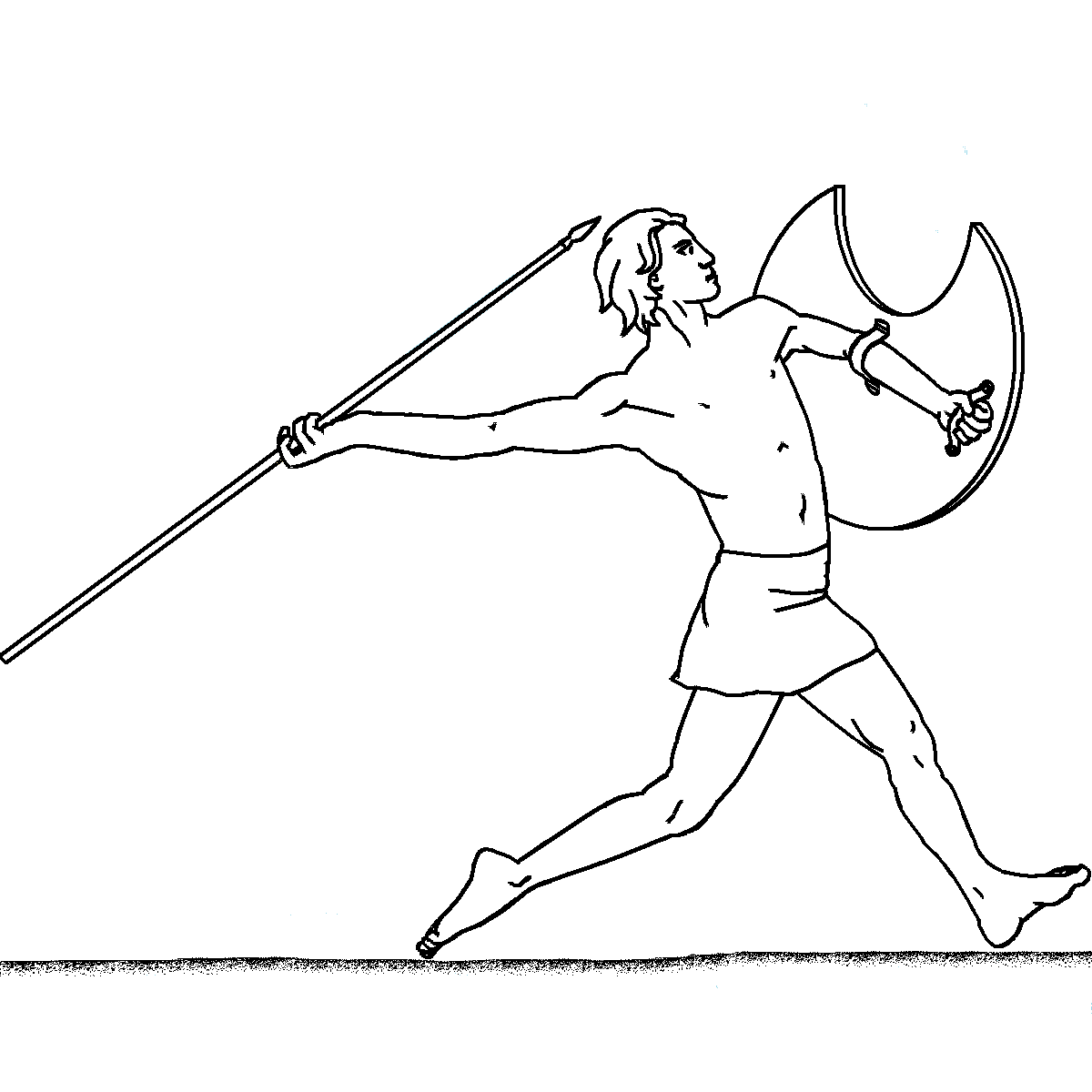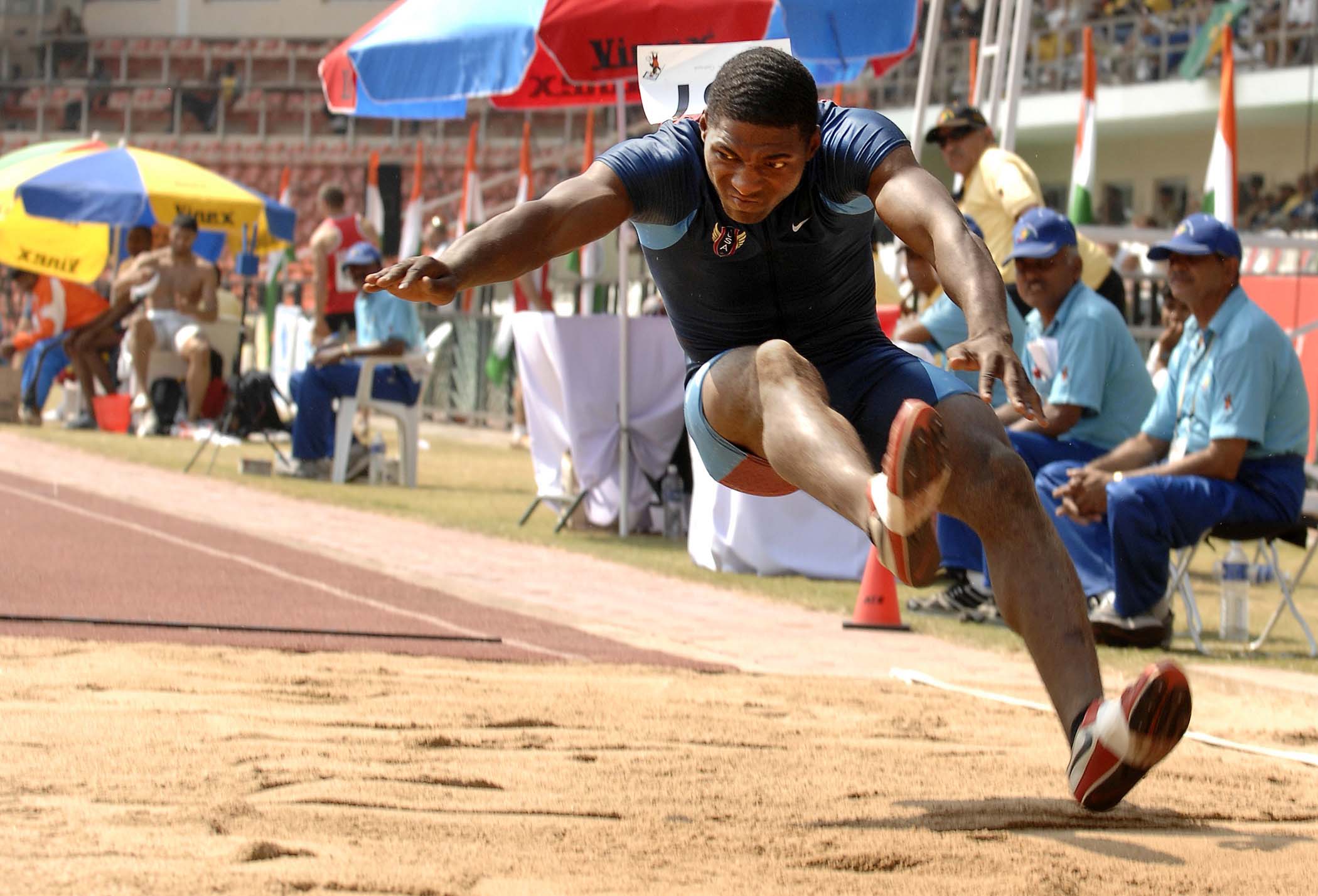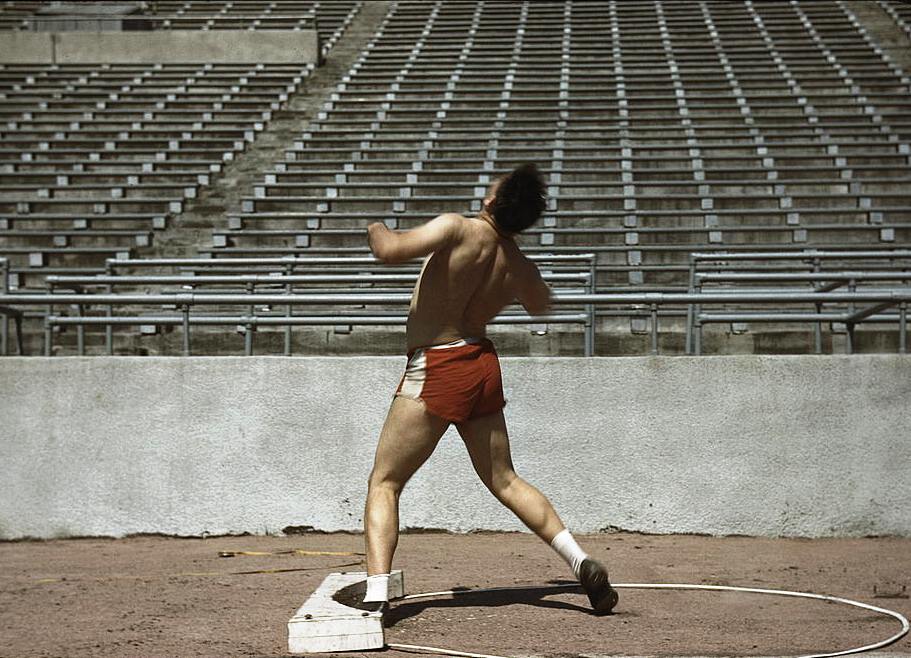|
Athletics At The 1988 Summer Olympics – Women's Heptathlon
These are the official results of the Women's Heptathlon competition at the 1988 Summer Olympics in Seoul, South Korea. There were a total number of 32 entrants, with three non-starters. The competition was held on September 23, 1988, and September 24, 1988. Records These were the standing World and Olympic records (in points) before the 1988 Summer Olympics. The following World and Olympic record was set during this competition. Summary Coming in to the Olympics, Jackie Joyner-Kersee stood well ahead of the world. As a 26 year old, she was at the peak of her career and the returning silver medalist had steadily improved since the first Olympic heptathlon. In the previous two years, she had amassed the top five marks in history, including the world record of 7215, set at the Olympic Trials. Along the way, she also tied Heike Drechsler for the world record in the long jump. She was famously coached by her husband Bob Kersee, who also coached her sister in law Florence Gri ... [...More Info...] [...Related Items...] OR: [Wikipedia] [Google] [Baidu] |
Olympic Stadium (Seoul)
The Seoul Olympic Stadium (), also known as Jamsil Olympic Stadium (formerly romanised as ''Chamshil''), is a multi-purpose stadium in Seoul, South Korea. It is the main stadium built for the 1988 Summer Olympics and the 1986 Asian Games, 10th Asian Games in 1986. It is the centrepiece of the Seoul Sports Complex in the Songpa District, in the southeast of the city south of the Han River (Korea), Han River. It is the largest stadium in South Korea. Design and construction This multi-purpose stadium was designed by Kim Swoo-geun. The lines of the stadium's profile imitate the elegant curves of a Korean Joseon Dynasty porcelain vase. Spectator seats are distributed on two tiers, half covered. Initially built with a capacity of approximately 100,000, today it seats 69,950. Before its construction, Seoul's largest venues were Dongdaemun Stadium and Hyochang Stadium. Seating 30,000 and 20,000 respectively, they were too small to attract world-class sporting events. Construction on ... [...More Info...] [...Related Items...] OR: [Wikipedia] [Google] [Baidu] |
100 Metres
The 100 metres, or 100-meter dash, is a sprint race in track and field competitions. The shortest common outdoor running distance, the dash is one of the most popular and prestigious events in the sport of athletics. It has been contested at the Summer Olympics since 1896 for men and since 1928 for women. The inaugural World Championships were in 1983. The reigning 100 m Olympic or world champion is often named "the fastest man or woman in the world". Fred Kerley and Shelly-Ann Fraser-Pryce are the reigning world champions; Marcell Jacobs and Elaine Thompson-Herah are the men's and women's Olympic champions. On an outdoor 400-metre running track, the 100 m is held on the home straight, with the start usually being set on an extension to make it a straight-line race. There are three instructions given to the runners immediately before and at the beginning of the race: "on your marks," "set," and the firing of the starter's pistol. The runners move to the star ... [...More Info...] [...Related Items...] OR: [Wikipedia] [Google] [Baidu] |
List Of World Records In Athletics
World records in athletics are ratified by World Athletics. Athletics records comprise the best performances in the sports of track and field, road running and racewalking. Records are kept for all events contested at the Olympic Games and some others. Unofficial records for some other events are kept by track and field statisticians. The only non-metric track distance for which official records are kept is the mile run. Criteria The criteria which must be satisfied for ratification of a world record are defined by World Athletics in Part III of the Competition Rules. These criteria also apply to national or other restricted records and also to performances submitted as qualifying marks for eligibility to compete in major events such as the Olympic Games. The criteria include: * The dimensions of the track and equipment used must conform to standards. In road events, the course must be accurately measured, by a certified measurer. * Except in road events (road running and race ... [...More Info...] [...Related Items...] OR: [Wikipedia] [Google] [Baidu] |
2007 World Championships In Athletics – Women's Heptathlon
The women's heptathlon event at the 2007 World Championships in Athletics took place from August 25–26, 2007 at the Nagai Stadium in Osaka, Japan. The competition is notable for having the highest number of competitors (39) in the World Championships history. Medalists Schedule :August 25, 2007 : :August 26, 2007 : Records {, class="wikitable" style=" text-align:center;" width="95%" , - !colspan="5", Standing records prior to the 2003 World Athletics Championships , - , World Record , , {{flagathlete, Jackie Joyner-Kersee , , align=left, {{flaglinkteam, USA , , 7291 , , September 24, 1988 , , {{flagicon, KOR Seoul, South Korea , - , Event Record , , {{flagathlete, Jackie Joyner-Kersee , , align=left, {{flaglinkteam, USA , , 7128 , , September 1, 1987 , , {{flagicon, ITA Rome, Italy Overall results Points table after 7th event {, class=wikitable style="text-align:center" !rowspan=2, Rank !rowspan=2, Athlete !rowspan=2, Nation !rowspan=2, Overallpoints !co ... [...More Info...] [...Related Items...] OR: [Wikipedia] [Google] [Baidu] |
Carolina Klüft
Carolina Evelyn Klüft (; born 2 February 1983) is a retired Swedish track and field athlete who competed in the heptathlon, triple jump, long jump, and pentathlon. She was an Olympic Champion, having won the heptathlon title in 2004. She was also a three-time World and two-time European heptathlon champion. She is the only athlete ever to win three consecutive world titles in the heptathlon (2003, 2005, 2007), and was unbeaten in 22 heptathlon and pentathlon competitions from 2002 to 2007, winning nine consecutive gold medals in major championships. Klüft first rose to prominence by winning the heptathlon at the 2002 European Championships and setting a new world junior record of 6,542 points. She then won the 2003 World Championships, becoming the third athlete ever to score over 7,000 points. She is the European record holder for heptathlon with a personal best of 7,032 points. This score ranks her second on the all-time heptathlon points score list, behind Jackie Joyner-K ... [...More Info...] [...Related Items...] OR: [Wikipedia] [Google] [Baidu] |
Athletics At The 1988 Summer Olympics – Women's Long Jump
The Long jump, Women's Long Jump at the Athletics at the 1988 Summer Olympics, 1988 Summer Olympics in Seoul, South Korea had an entry list of 32 competitors, with two qualifying groups (32 jumpers) before the final (12) took place on Thursday September 29, 1988. Records These were the standing World and Olympic records (in metres) prior to the 1988 Summer Olympics. The following Olympic records were set during this competition. Summary This was a showdown of the top three female long jumpers of all time, then and remaining now. All three had held the world record. Galina Chistyakova had set the still standing Women's long jump world record progression, world record just a few months earlier, breaking up a log jam. Heike Drechsler had set the world record, improved it to 7.45m two years earlier and subsequently equalled her record two weeks later. Jackie Joyner-Kersee equalled the record the following year, the Chistyakova equalled it again earlier in the same competitio ... [...More Info...] [...Related Items...] OR: [Wikipedia] [Google] [Baidu] |
800 Metres
The 800 metres, or meters ( US spelling), is a common track running event. It is the shortest commonly run middle-distance running event. The 800 metres is run over two laps of an outdoor (400-metre) track and has been an Olympic event since the first modern games in 1896. During the winter track season the event is usually run by completing four laps of an indoor 200-metre track. The event was derived from the imperial measurement of a half mile (880 yards), a traditional English racing distance. 800m is 4.67m less than a half mile. The event combines aerobic endurance with anaerobic conditioning and sprint speed, so the 800m athlete has to combine training for both. Runners in this event are occasionally fast enough to also compete in the 400 metres but more commonly have enough endurance to 'double up' in the 1500m. Only Alberto Juantorena and Jarmila Kratochvílová have won major international titles at 400m and 800m. Race tactics The 800m is also known for its tactical ... [...More Info...] [...Related Items...] OR: [Wikipedia] [Google] [Baidu] |
Javelin
A javelin is a light spear designed primarily to be thrown, historically as a ranged weapon, but today predominantly for sport. The javelin is almost always thrown by hand, unlike the sling, bow, and crossbow, which launch projectiles with the aid of a hand-held mechanism. However, devices do exist to assist the javelin thrower in achieving greater distance, such as spear-throwers or the amentum. A warrior or soldier armed primarily with one or more javelins is a javelineer. The word javelin comes from Middle English and it derives from Old French ''javelin'', a diminutive of ''javelot'', which meant spear. The word ''javelot'' probably originated from one of the Celtic languages. Prehistory There is archaeological evidence that javelins and throwing sticks were already in use by the last phase of the Lower Paleolithic. Seven spear-like objects were found in a coal mine in the city of Schöningen, Germany. Stratigraphy, Stratigraphic dating indicates that the weapons are abo ... [...More Info...] [...Related Items...] OR: [Wikipedia] [Google] [Baidu] |
Heptathlon
A heptathlon is a track and field combined events contest made up of seven events. The name derives from the Greek επτά (hepta, meaning "seven") and ἄθλος (áthlos, or ἄθλον, áthlon, meaning "competition"). A competitor in a heptathlon is referred to as a heptathlete. There are two heptathlons – the men's and the women's heptathlon – composed of different events. The men's heptathlon is older and is held indoors, while the women's is held outdoors and was introduced in the 1980s, first appearing in the Olympics in 1984. Women's heptathlon Women's heptathlon is the combined event for women contested in the athletics programme of the Olympics and at the World Athletics Championships. The World Athletics Combined Events Tour determines a yearly women's heptathlon champion. The women's outdoor heptathlon consists of the following events, with the first four contested on the first day, and the remaining three on day two: * 100 metres hurdles * High jump * Sho ... [...More Info...] [...Related Items...] OR: [Wikipedia] [Google] [Baidu] |
List Of Olympic Records In Athletics
The modern Summer Olympic Games have been held every four years since the first Games in 1896 (except 1916 due to the First World War, 1940 and 1944 due to the Second World War, and 2020 due to the COVID-19 pandemic) and Olympic records are recognised by the International Olympic Committee (IOC) in each event. The athletics events, which take place at each Games, are divided into four groups: track events (including sprints, middle- and long-distance running, hurdling and relays), field events (including javelin, discus, hammer, pole vault, long and triple jumps), road events (such as walks and the marathon) and combined events (the heptathlon and the decathlon). Women compete in 23 athletics events during the Games, and men compete in 24; while 21 of the events are the same for both men and women, men exclusively compete in the 50 km walk, the women's combined event is the heptathlon while the men compete in the decathlon, and the short distance hurdles for women is contest ... [...More Info...] [...Related Items...] OR: [Wikipedia] [Google] [Baidu] |
Long Jump
The long jump is a track and field event in which athletes combine speed, strength and agility in an attempt to leap as far as possible from a takeoff point. Along with the triple jump, the two events that measure jumping for distance as a group are referred to as the "horizontal jumps". This event has a history in the ancient Olympic Games and has been a modern Olympic event for men since the first Olympics in 1896 and for women since 1948. Rules At the elite level, competitors run down a runway (usually coated with the same rubberized surface as running tracks, crumb rubber or vulcanized rubber, known generally as an all-weather track) and jump as far as they can from a wooden or synthetic board, 20 centimetres or 8 inches wide, that is built flush with the runway, into a pit filled with soft damp sand. If the competitor starts the leap with any part of the foot past the foul line, the jump is declared a foul and no distance is recorded. A layer of plasticine is ... [...More Info...] [...Related Items...] OR: [Wikipedia] [Google] [Baidu] |
Shot Put
The shot put is a track and field event involving "putting" (throwing) a heavy spherical ball—the ''shot''—as far as possible. The shot put competition for men has been a part of the modern Olympics since their revival in 1896, and women's competition began in 1948. History Homer mentions competitions of rock throwing by soldiers during the Siege of Troy but there is no record of any dead weights being thrown in Greek competitions. The first evidence for stone- or weight-throwing events were in the Scottish Highlands, and date back to approximately the first century. In the 16th century King Henry VIII was noted for his prowess in court competitions of weight and hammer throwing. The first events resembling the modern shot put likely occurred in the Middle Ages when soldiers held competitions in which they hurled cannonballs. Shot put competitions were first recorded in early 19th century Scotland, and were a part of the British Amateur Championships beginning in 1866. ... [...More Info...] [...Related Items...] OR: [Wikipedia] [Google] [Baidu] |



